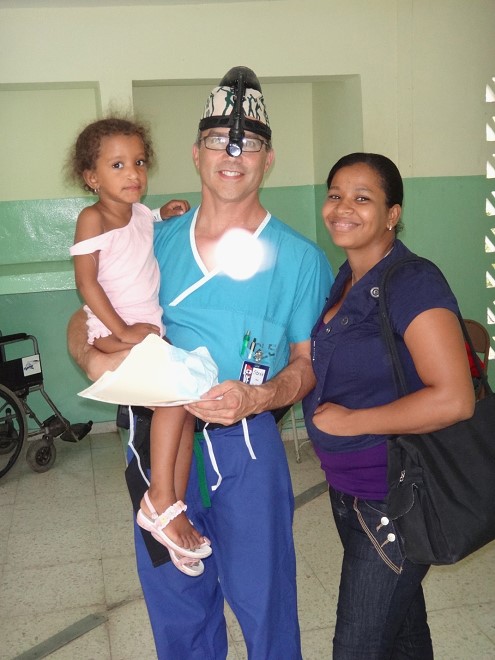
This Article Has Been Medically Approved By Dr. Timothy Connall
On Sunday, the day after our arrival in Guyana, our entire team went to work. The surgeons and support staff went to the nearby Seventh Day Adventist church to see patients. Before our arrival, word of our mission had spread throughout the country with announcements, flyers, and by word-of-mouth through the medical community. Guyanese citizens from remote regions of the country traveled from afar to see us, and residents of Georgetown traveled only a few miles as they would to see their local doctor.
Local physicians and missionaries helped with pre-screening many prospective patients well before our arrival in country. Many patients’ medical histories were sent to us by e-mail in the weeks ahead of our mission. In a complex case of an advanced facial tumor, we were able to see photos of the patient and arrange for a CT scan before our arrival. This required a heroic logistical effort as the patient lived in a remote village with limited access to transportation. Legacy of Healing arranged for the patient (and her friend who served as a translator) to be flown in a bush plane to Georgetown where a CT scan would be performed. The results of the CT scan were sent to Dr. Schmidt in Ohio a week before his departure for Guyana. The results were favorable, indicating that the tumor was superficial and that tumor excision and reconstruction would be feasible during our mission.
In administrative rooms in the church we set-up three surgical clinics; one for reconstructive surgery, one for general surgery, and one for hand surgery. About 280 people gathered in the church sanctuary in anticipation of their visit with the surgeons. Due to the strong British influence in Guyana in the 20th century, English is the official language of the country. With no language barriers communication with our patients was easy, clear and direct.

We screened about 60 patients in the plastic surgery clinic. We talked with and examined patients with all types of reconstructive problems. Primary and secondary problems of the lips and mouth due to cleft lips and cleft palates were seen and scheduled for surgery. Burn injuries were common, resulting in visible deformities and loss of movement and function of the eyes, neck, arms, hands, legs, and feet. Patients with skin tumors, possible skin cancers and severe keloids were evaluated. Women with breast conditions, many with breast masses, were assessed. We evaluated patients with complex wounds, including a twenty year-old women with a huge, infected, open wound of her left breast that developed after a breast biopsy six months before seeing us.
The screening day on a surgical mission is heart wrenching because so many people are seen who need help, but our operating time and our capacity to perform very complex operations is limited. In addition, some patients have medical problems that make them too high risk to undergo surgery in an austere environment. However, on this day few patients with major problems were turned away, and most of the patients seen were scheduled for surgery and underwent surgery in the following four days.










